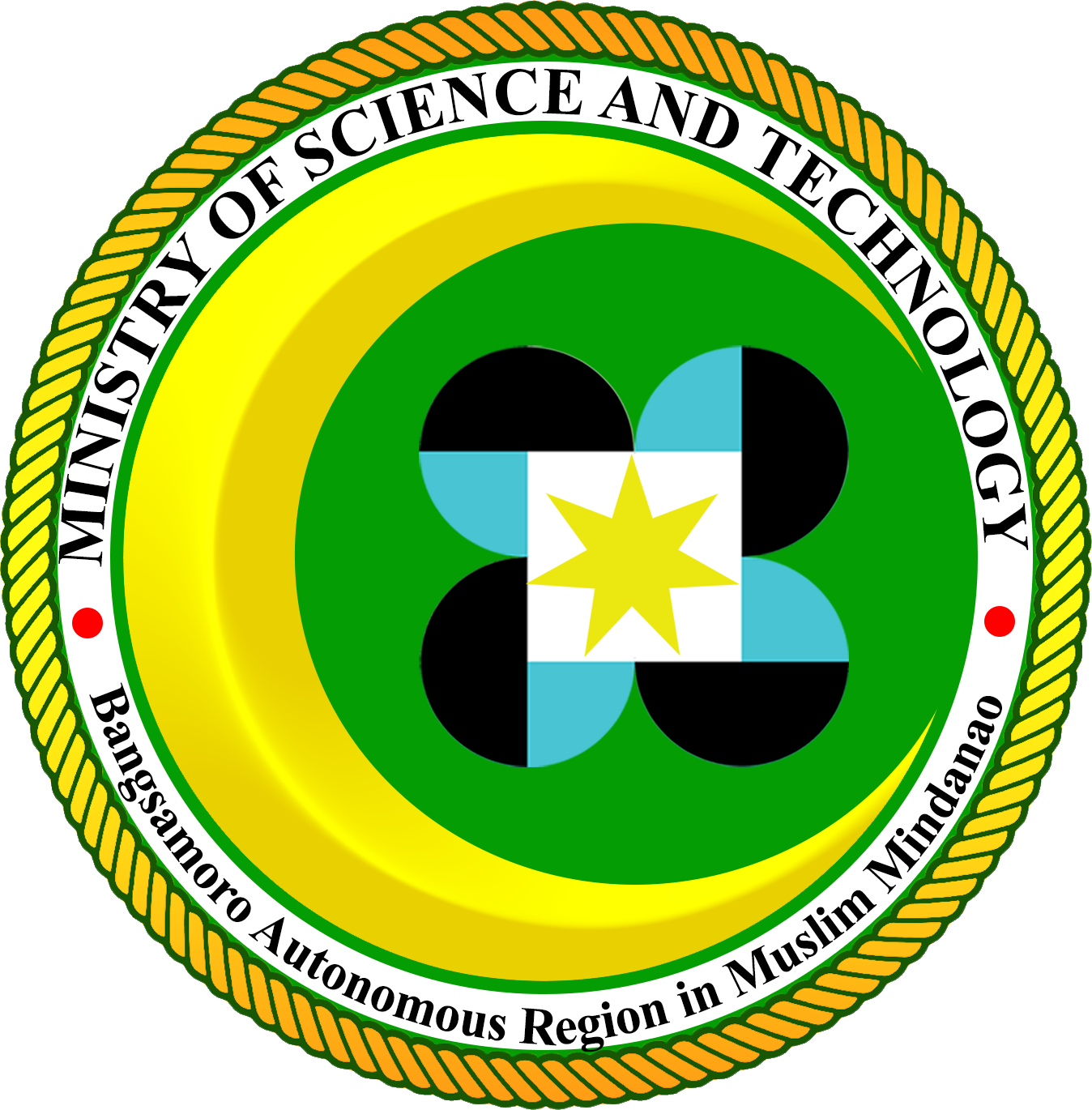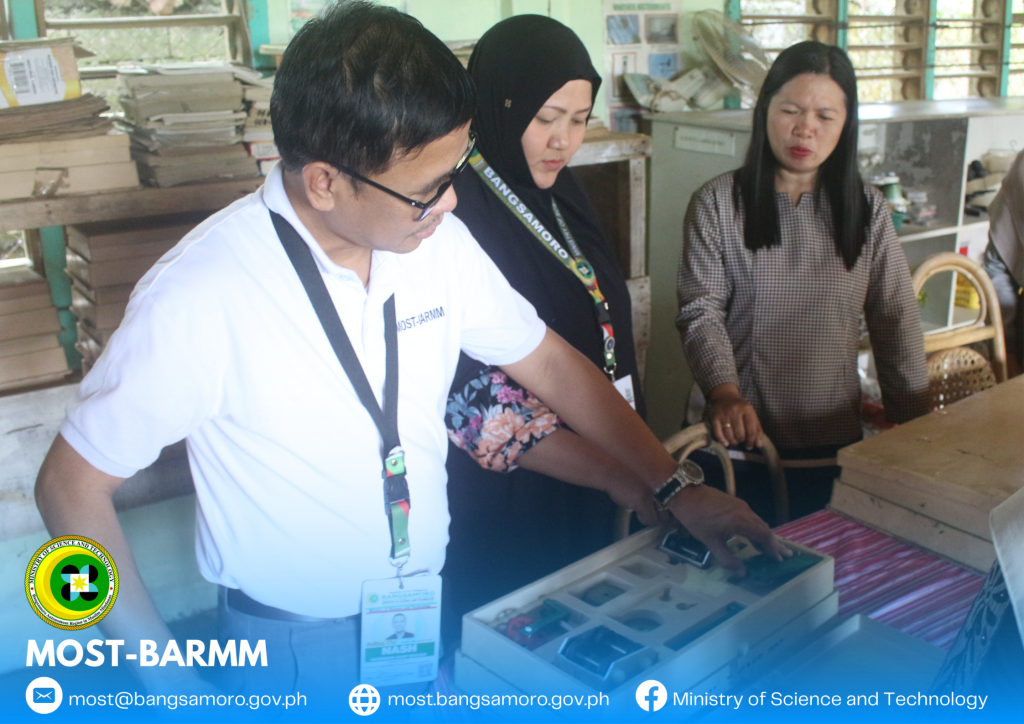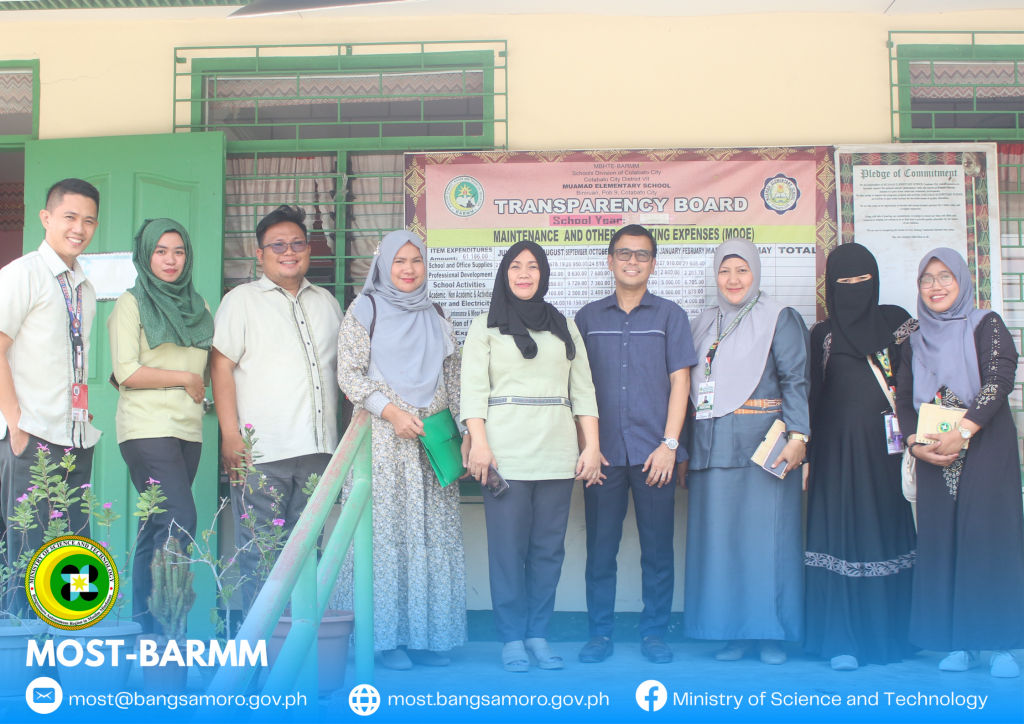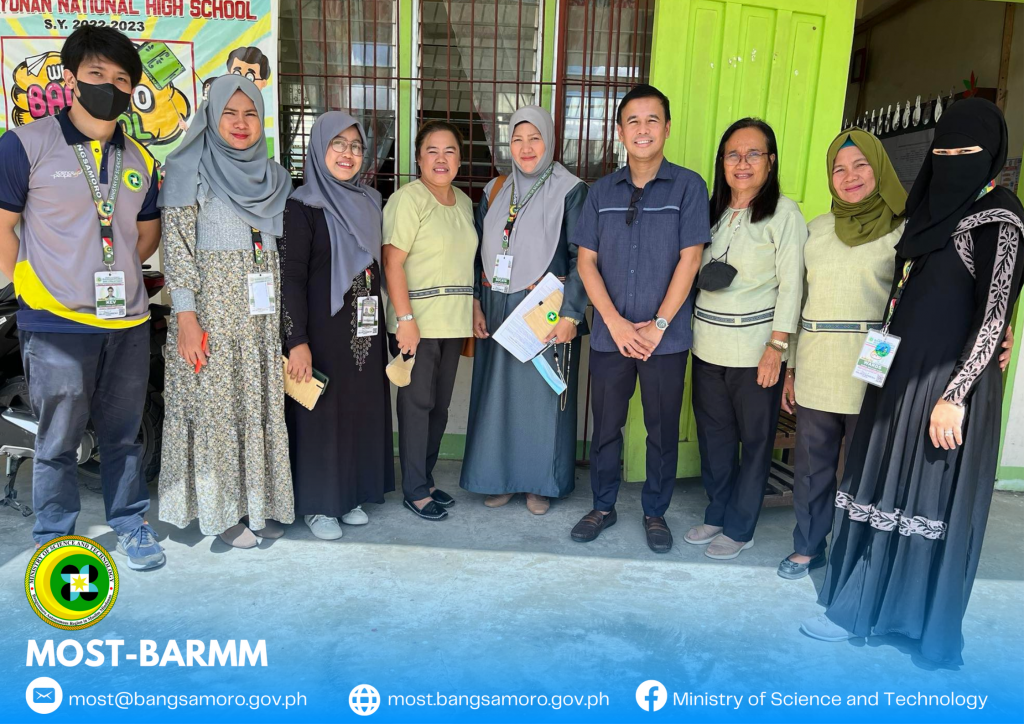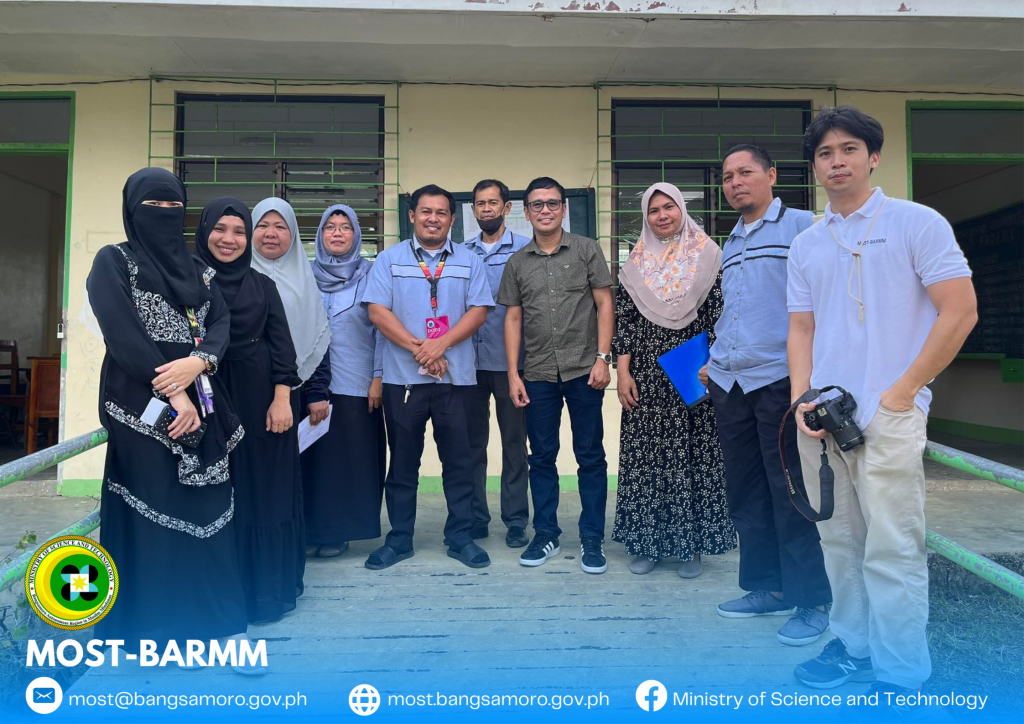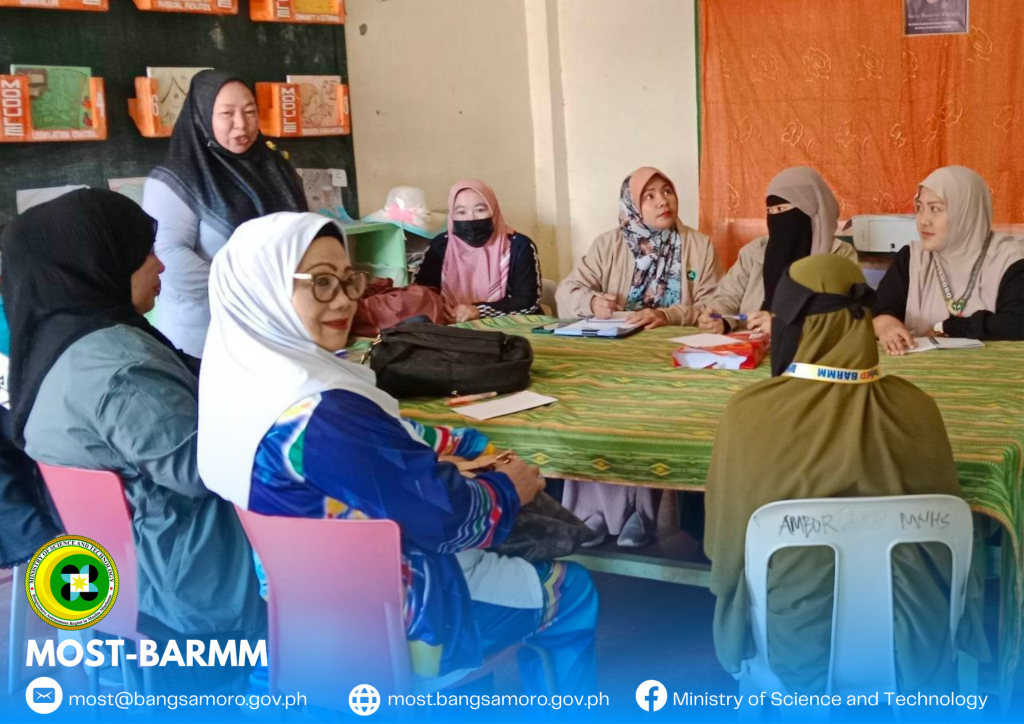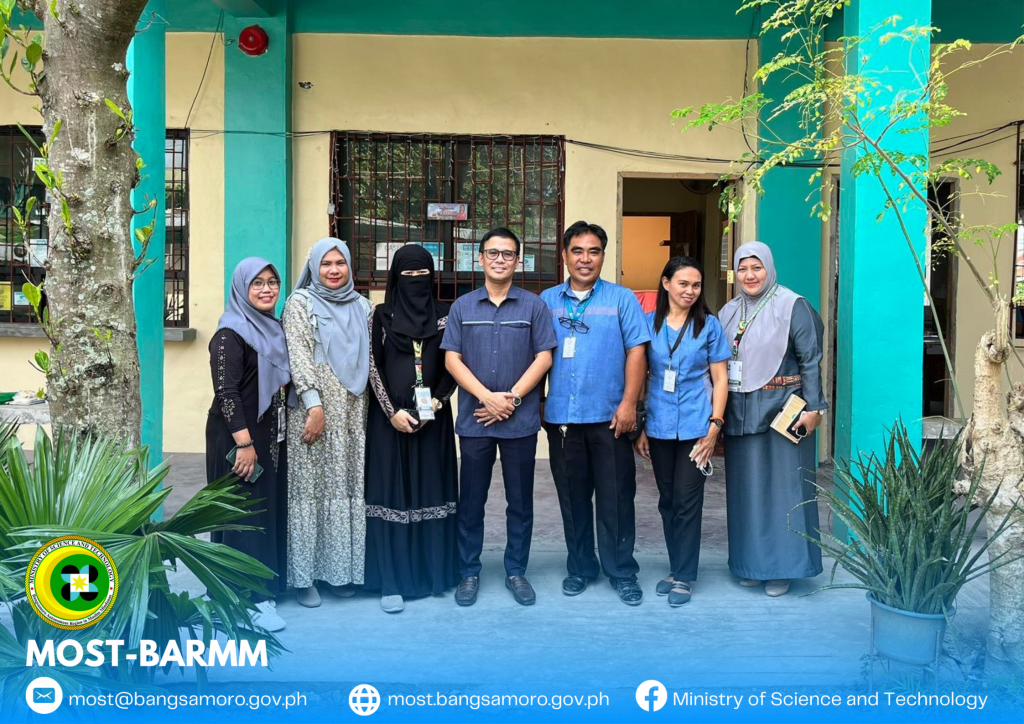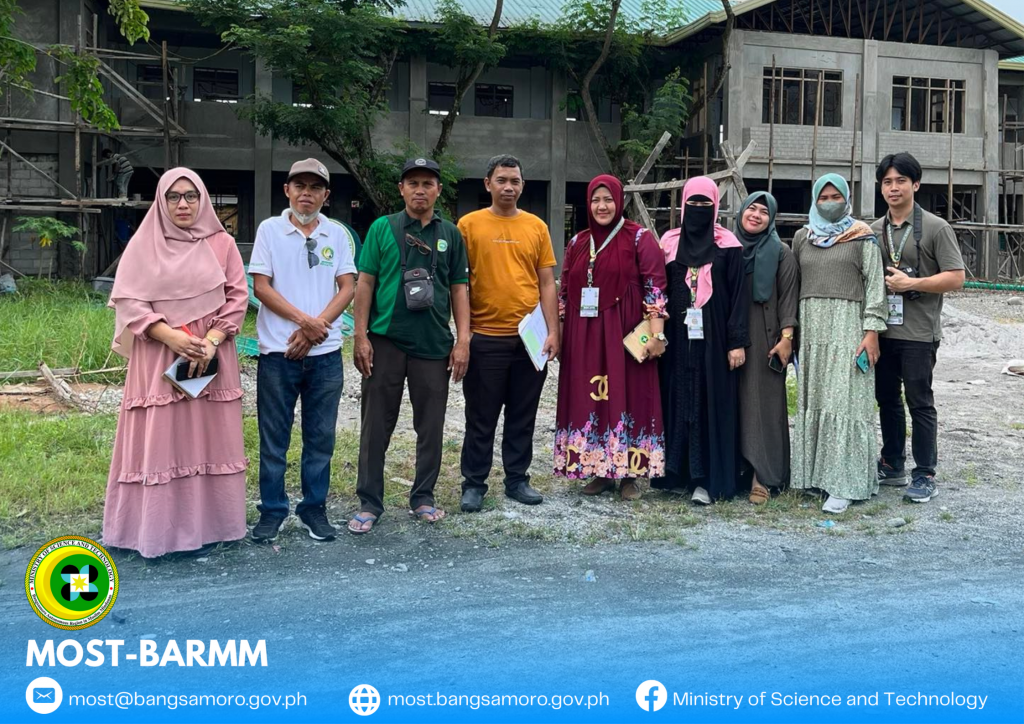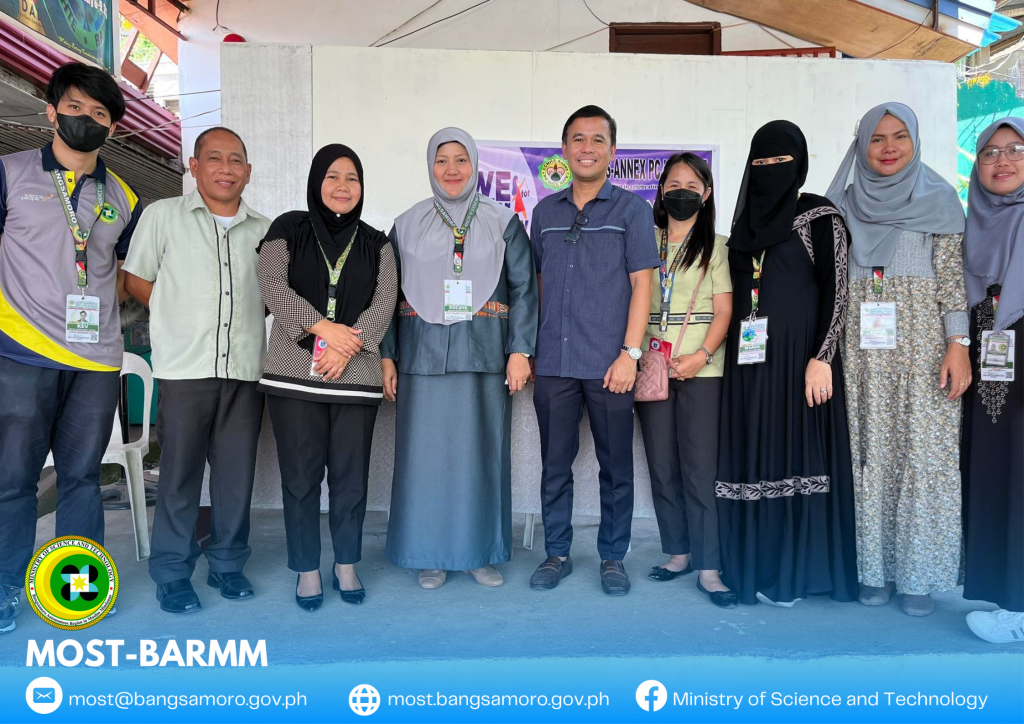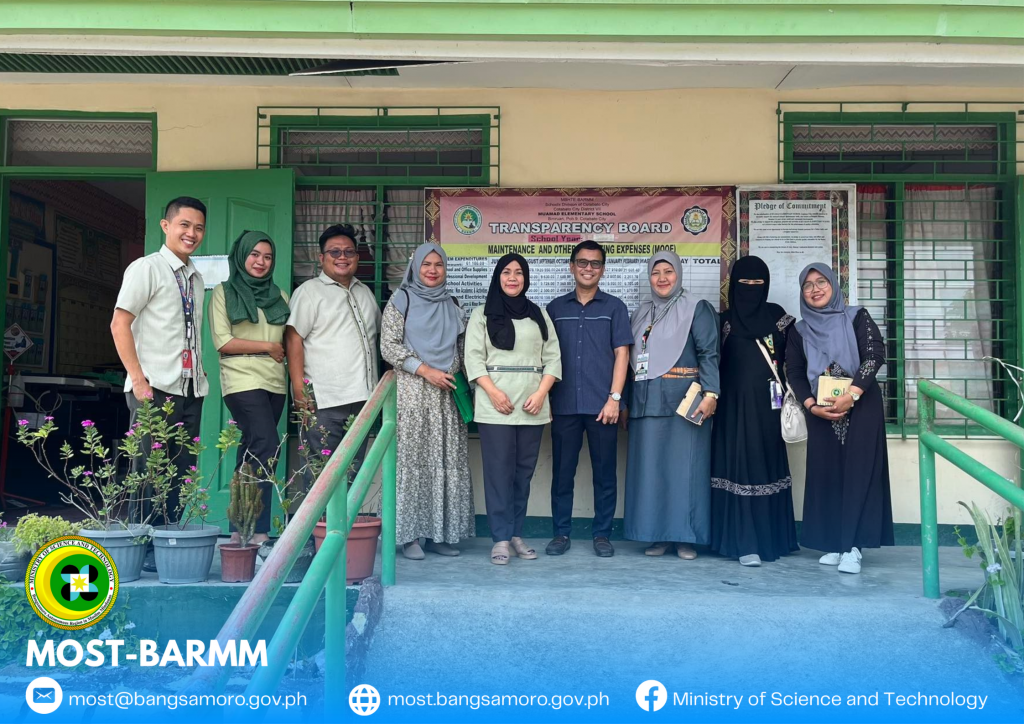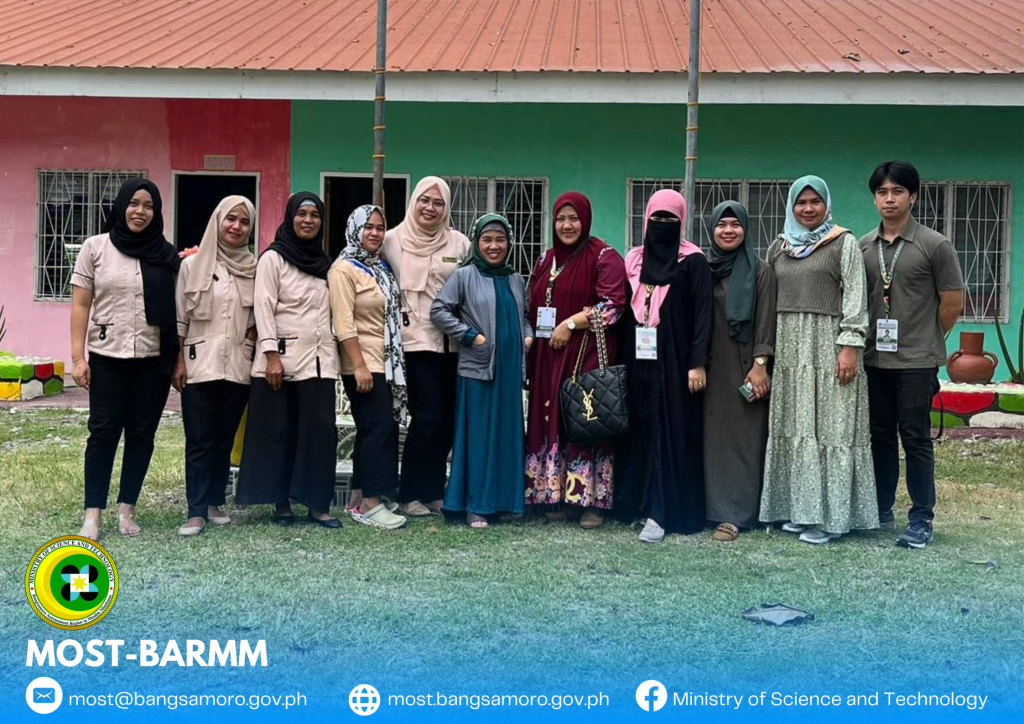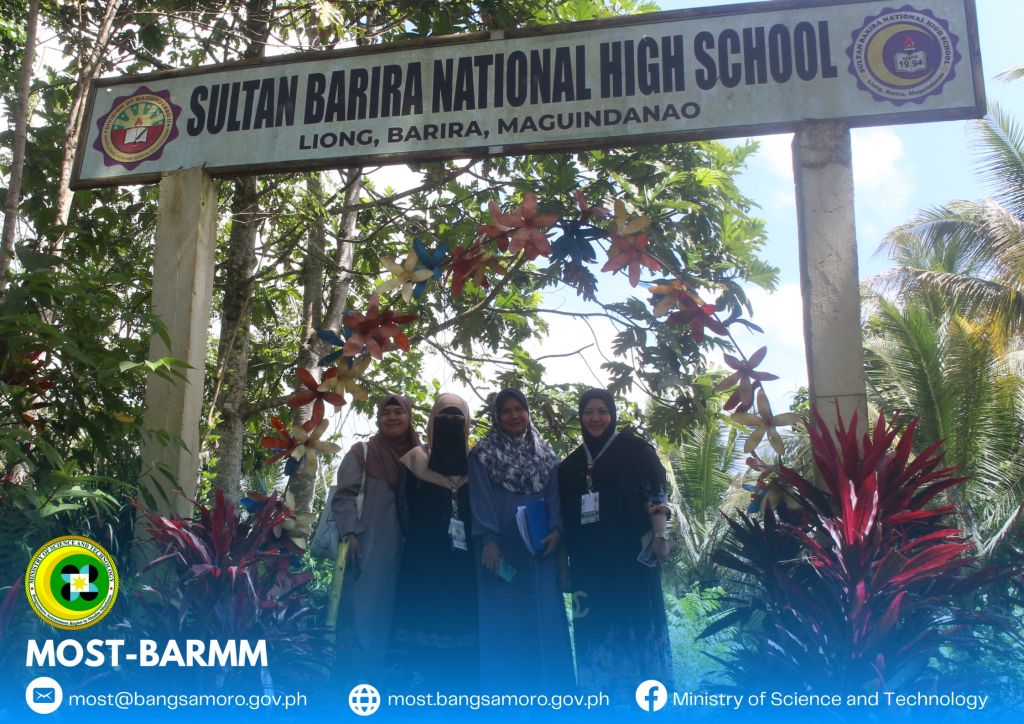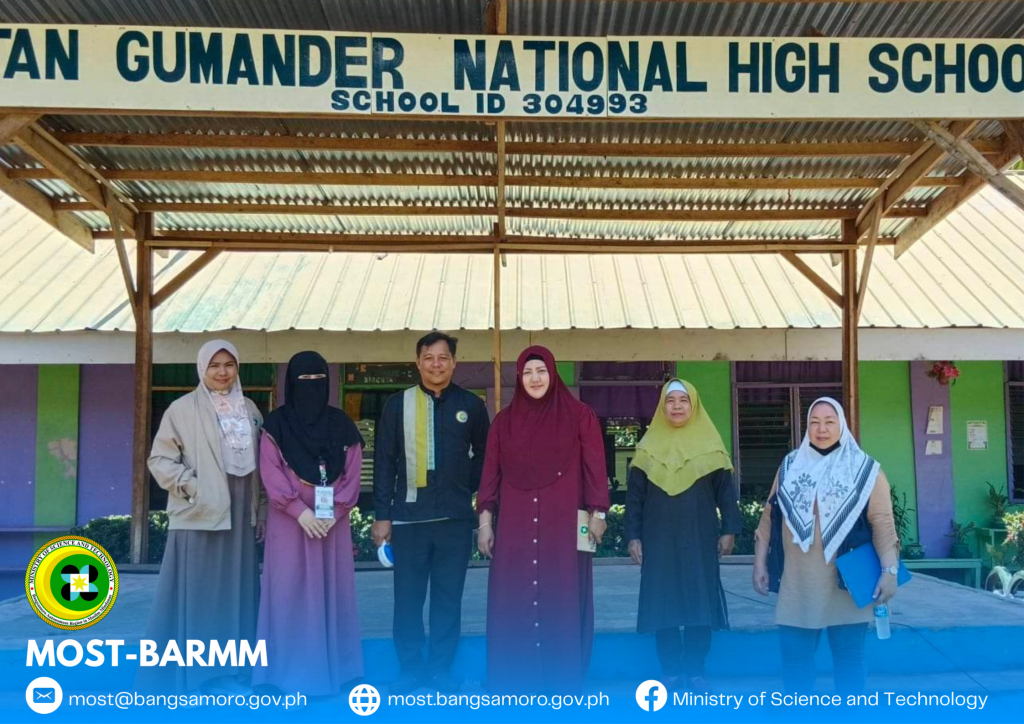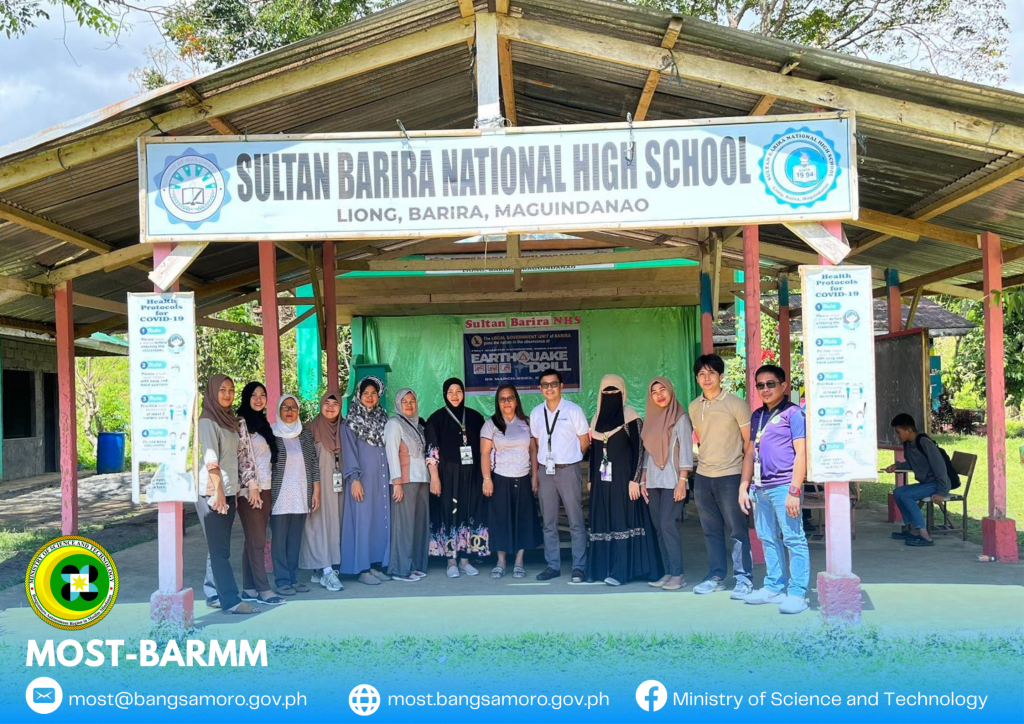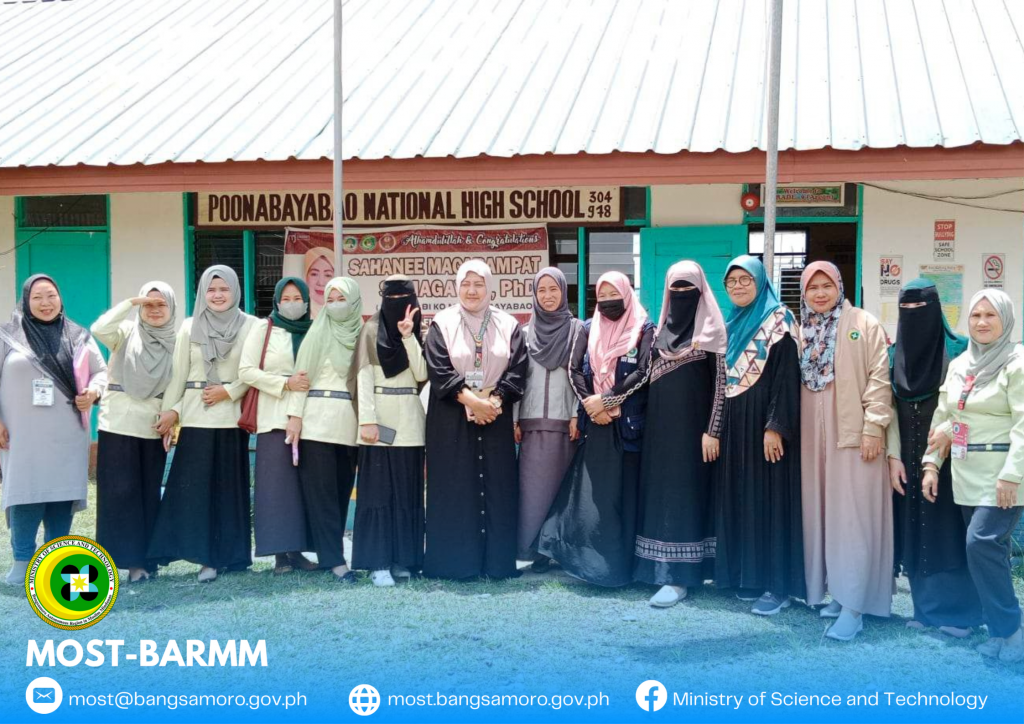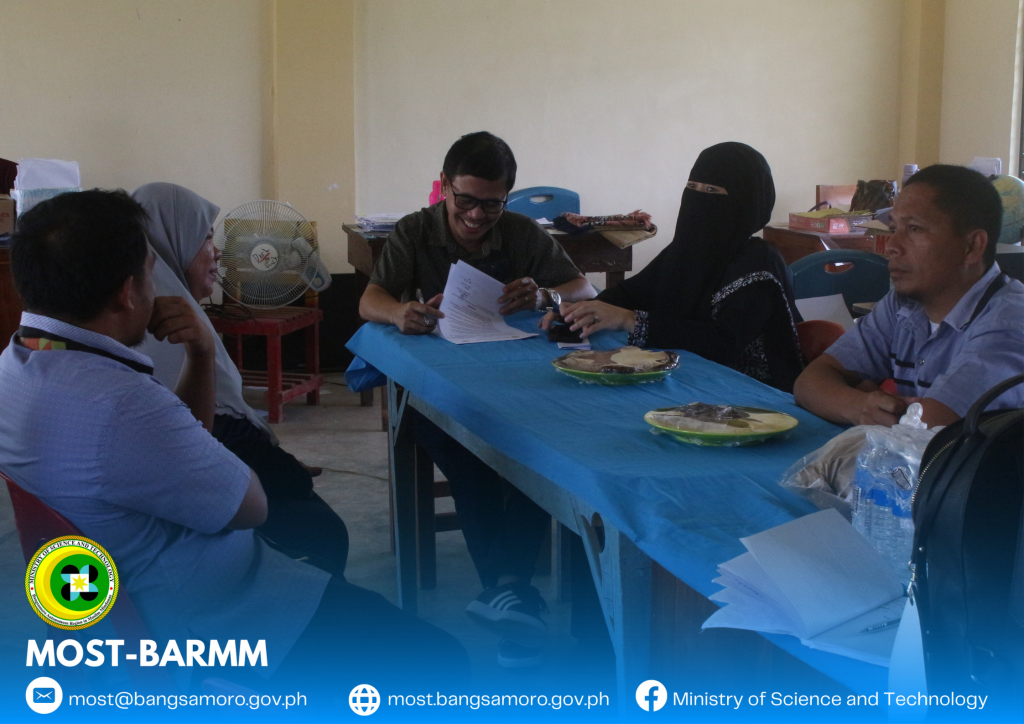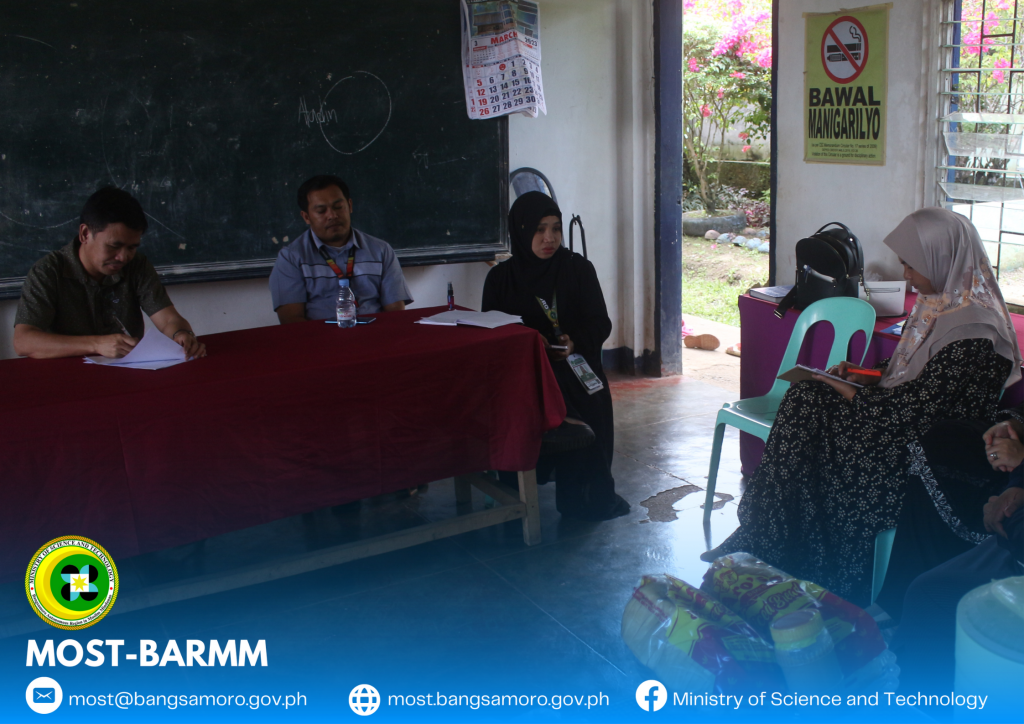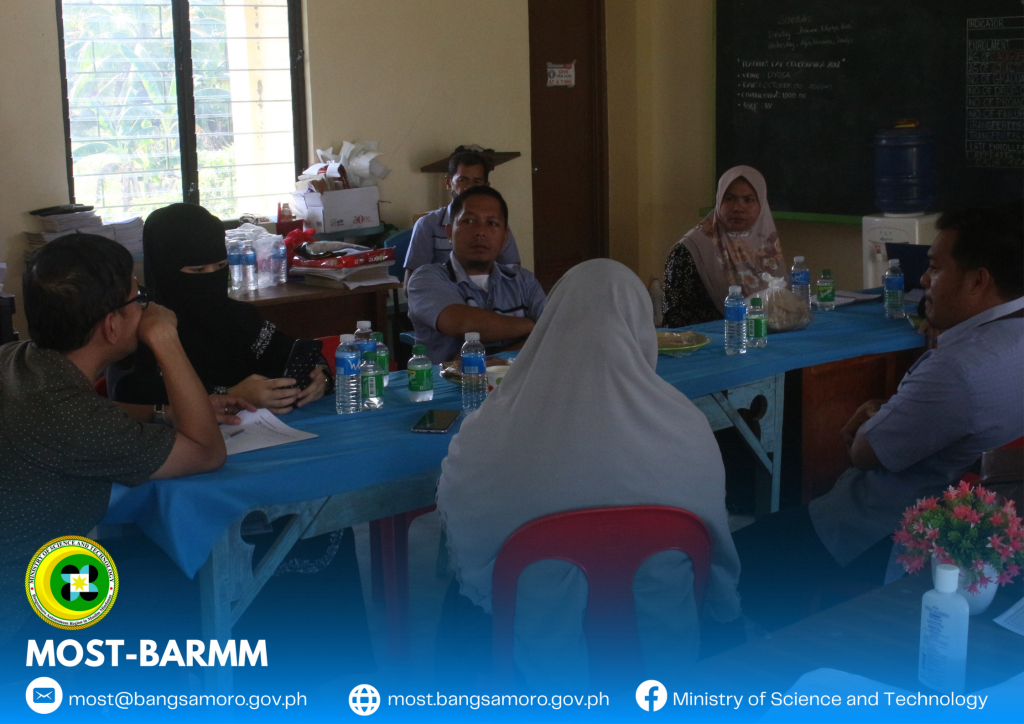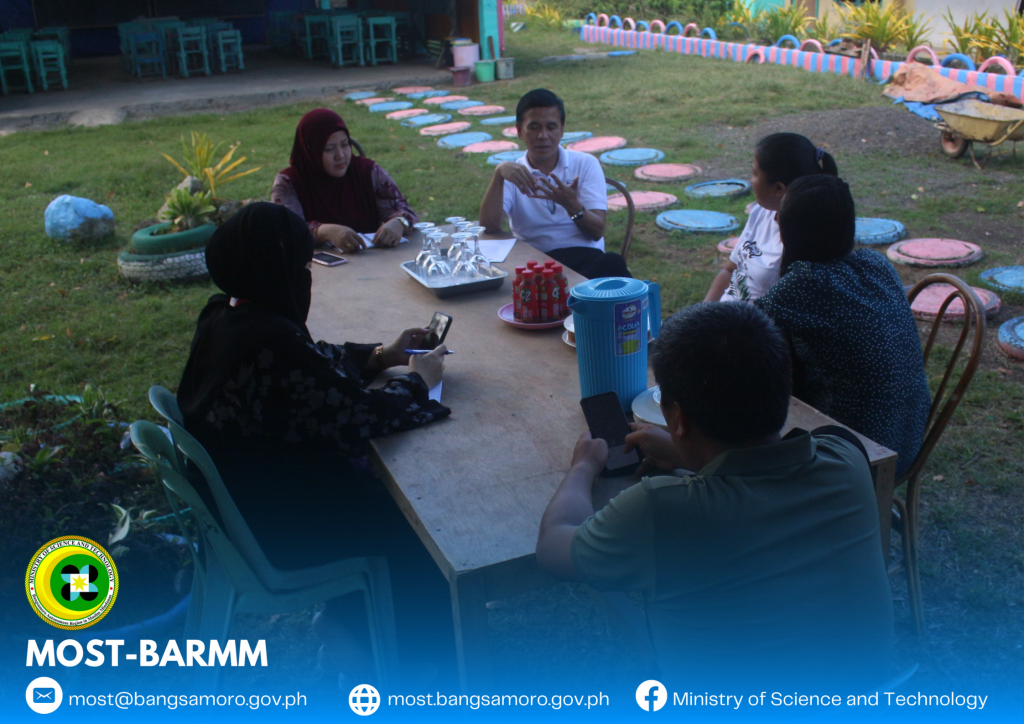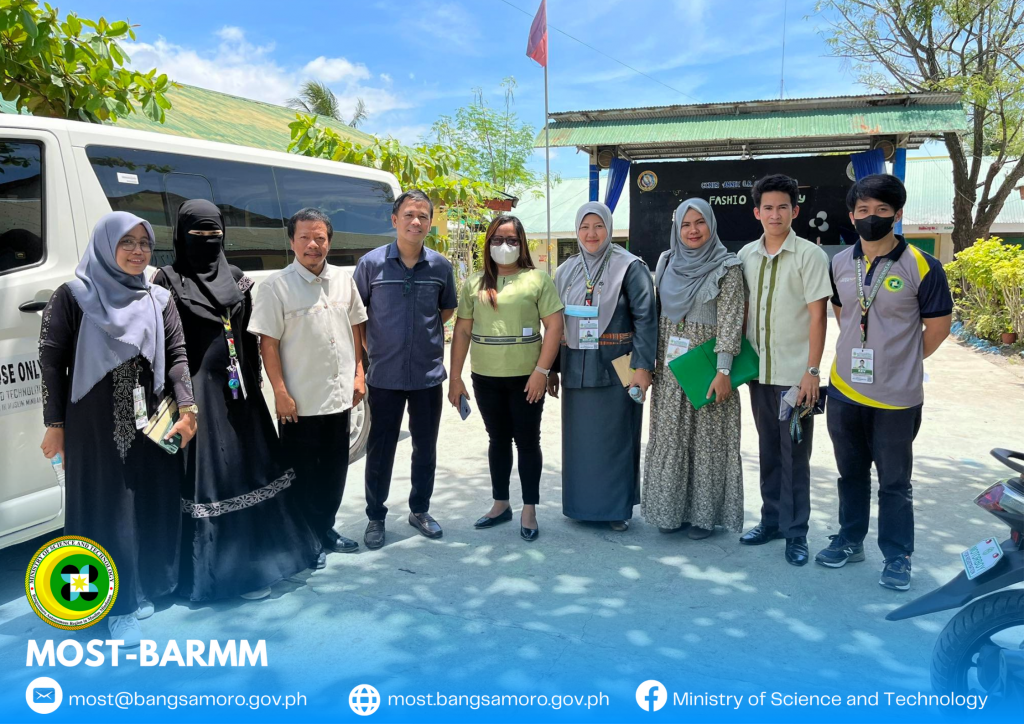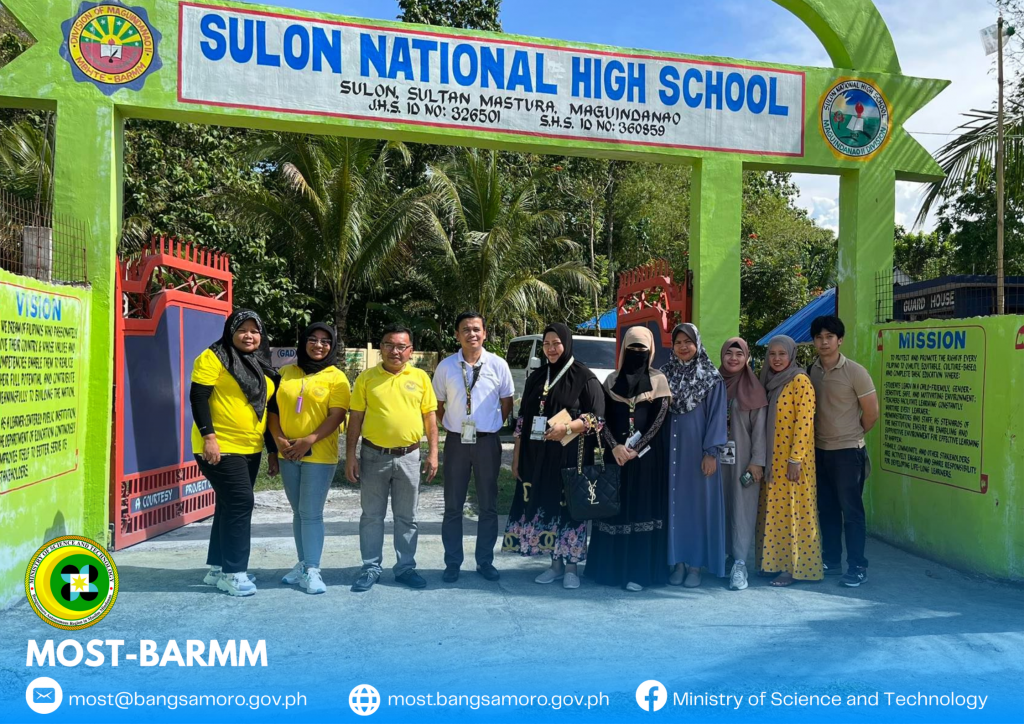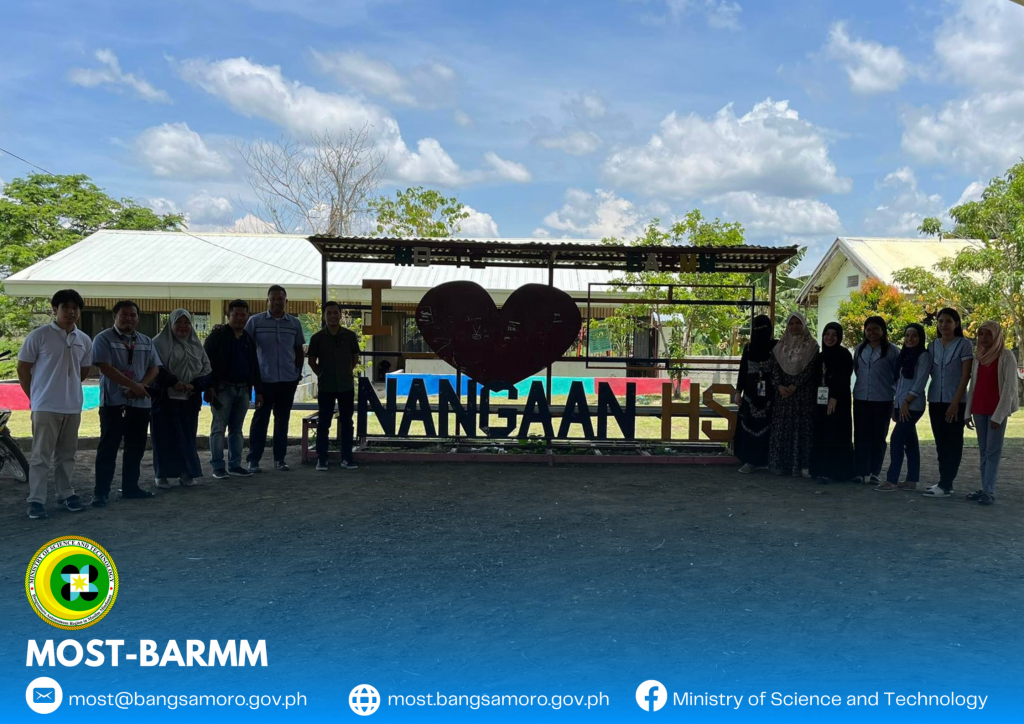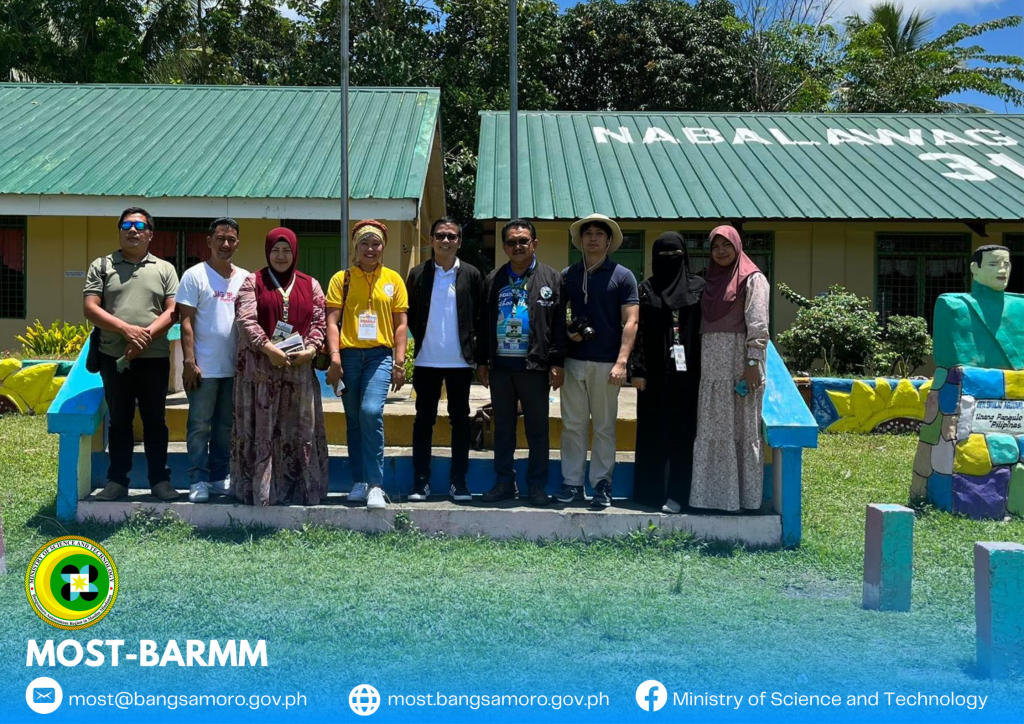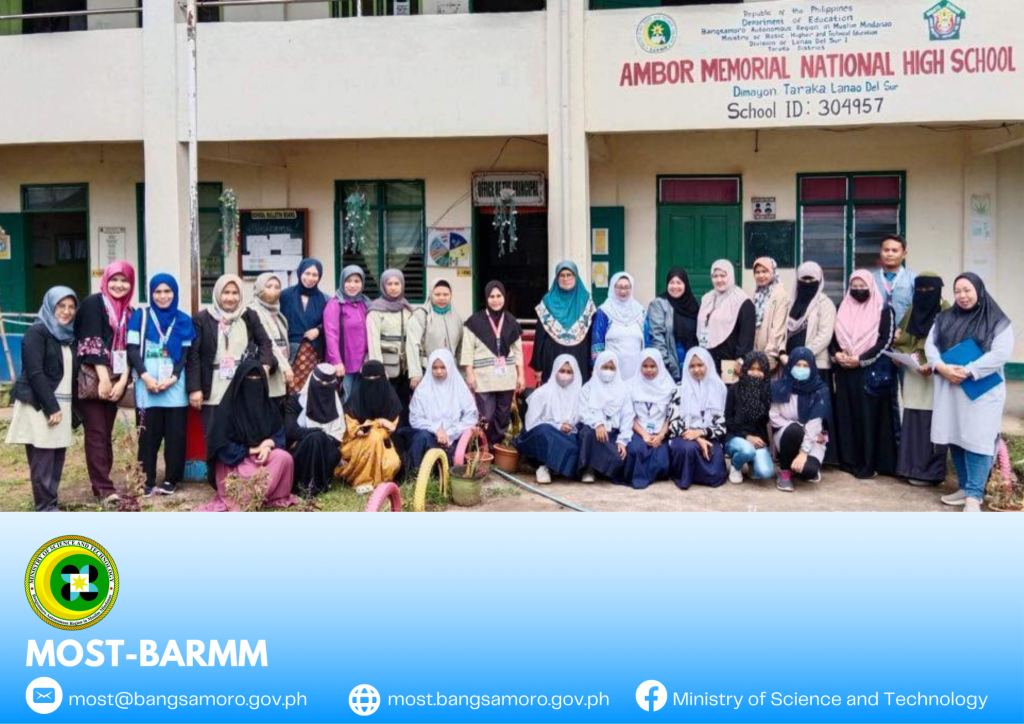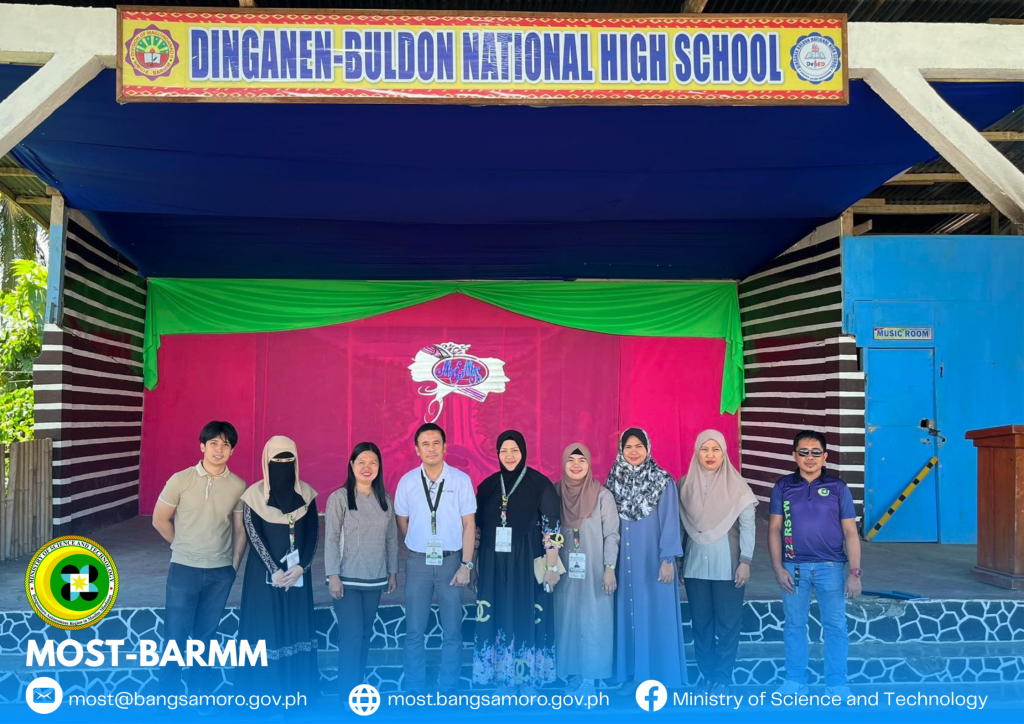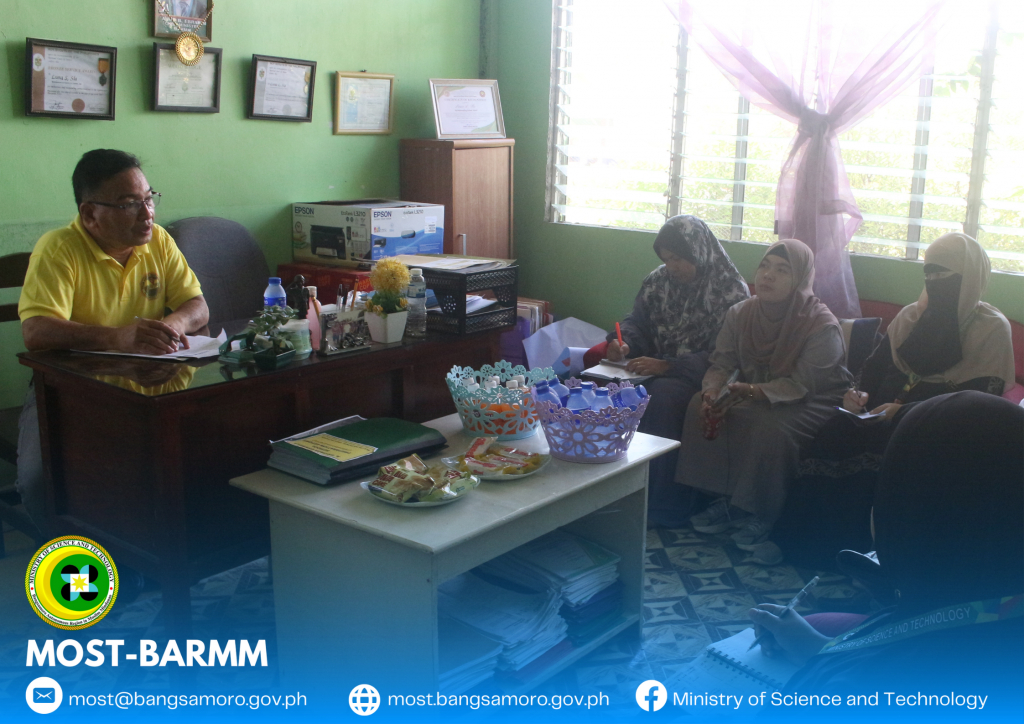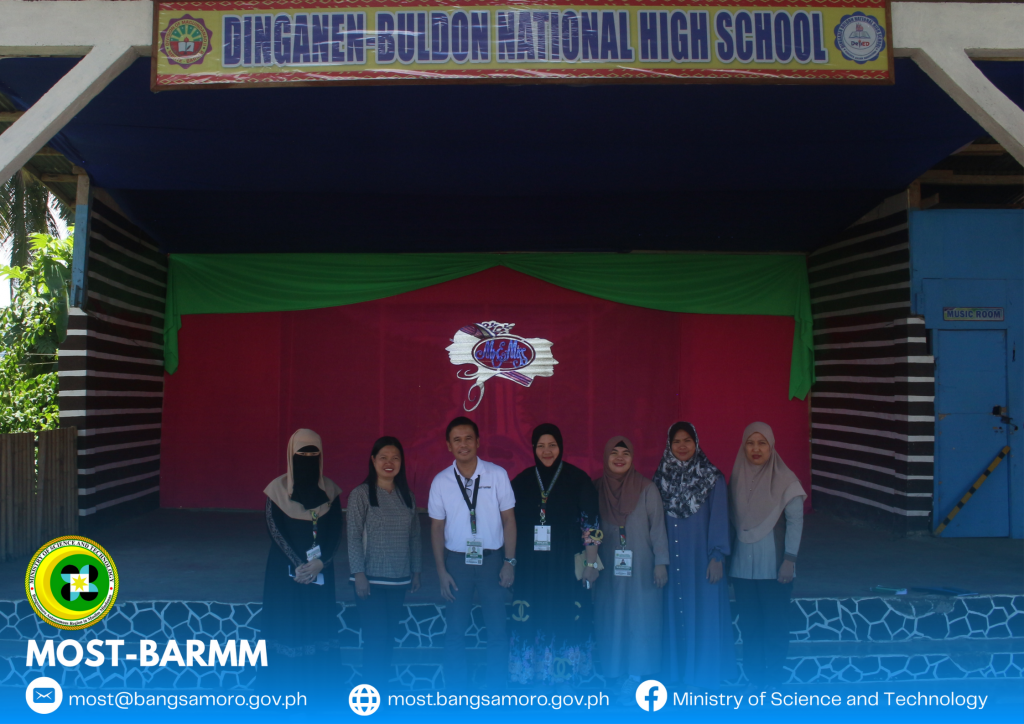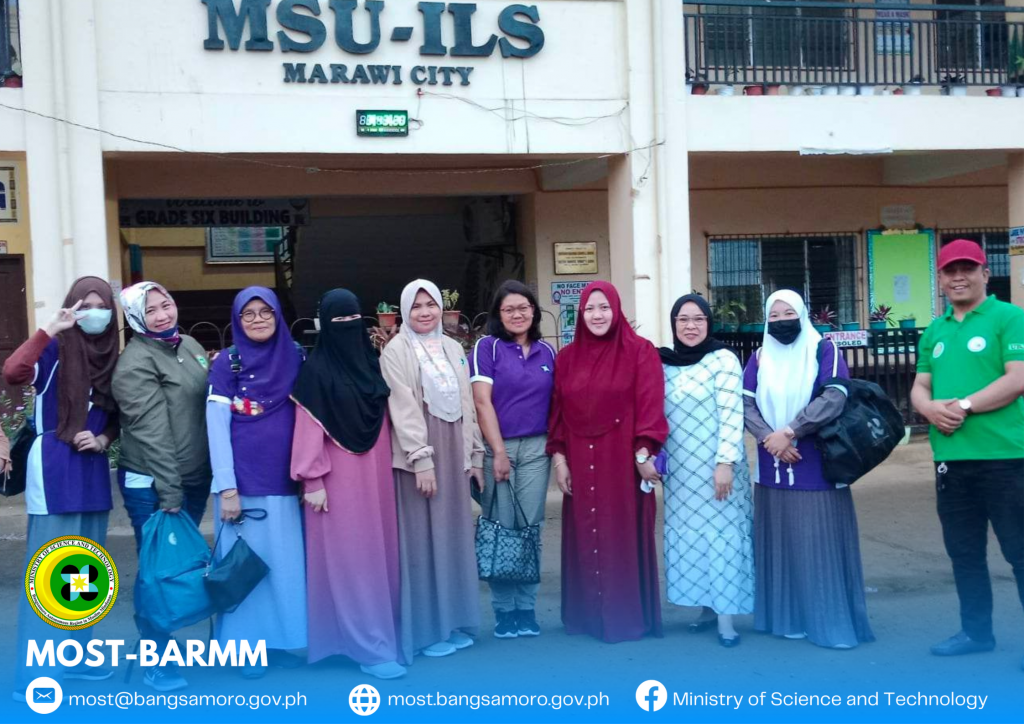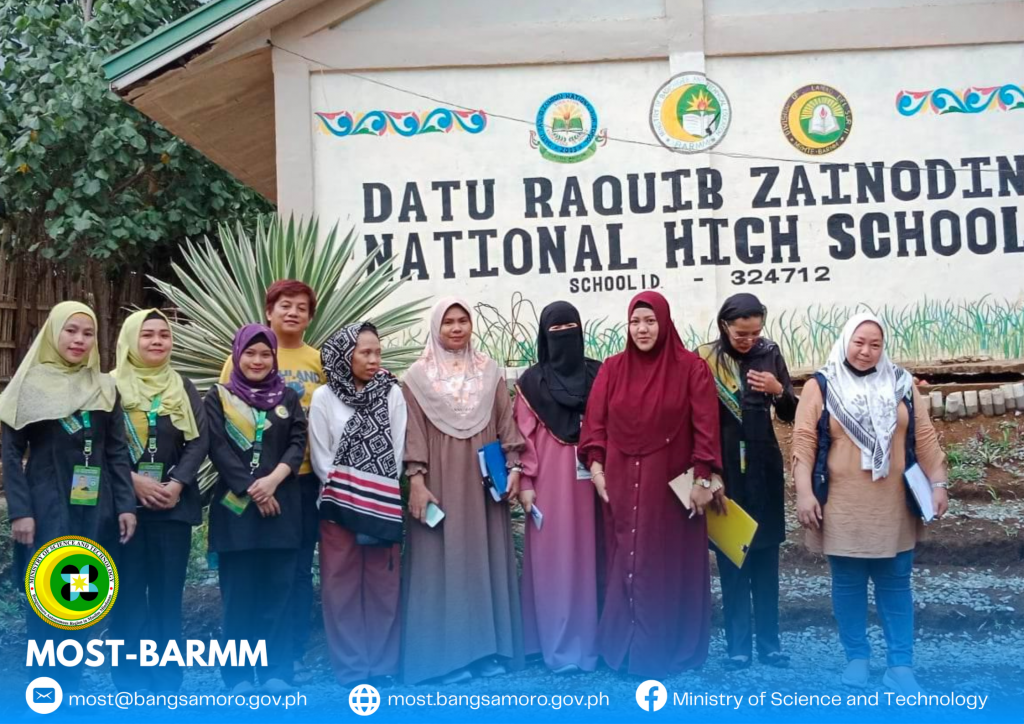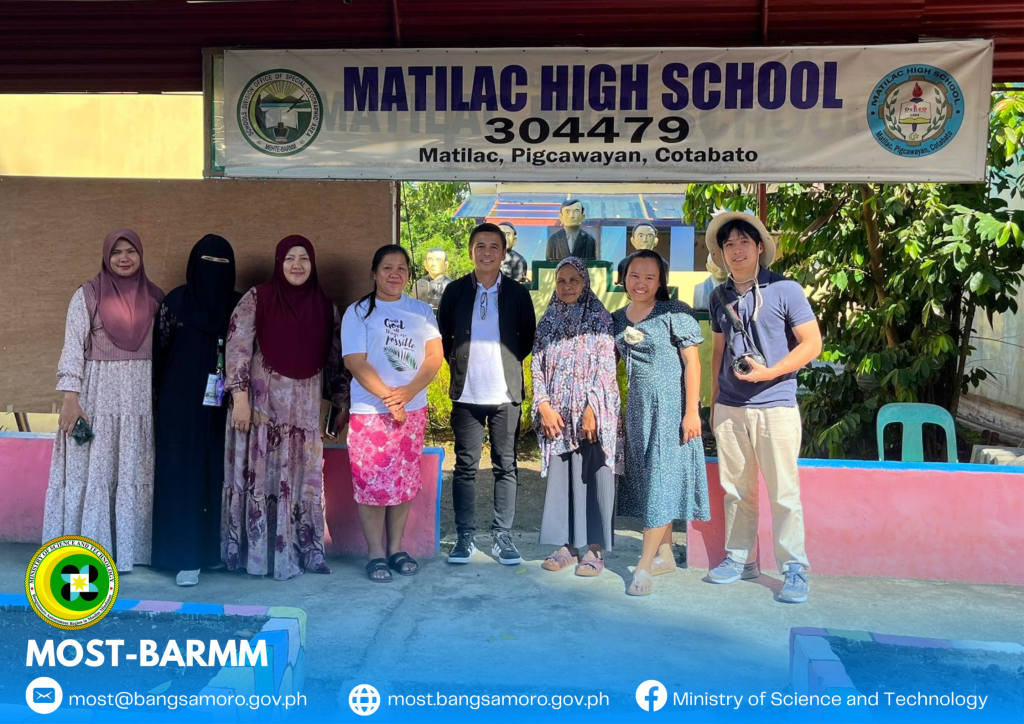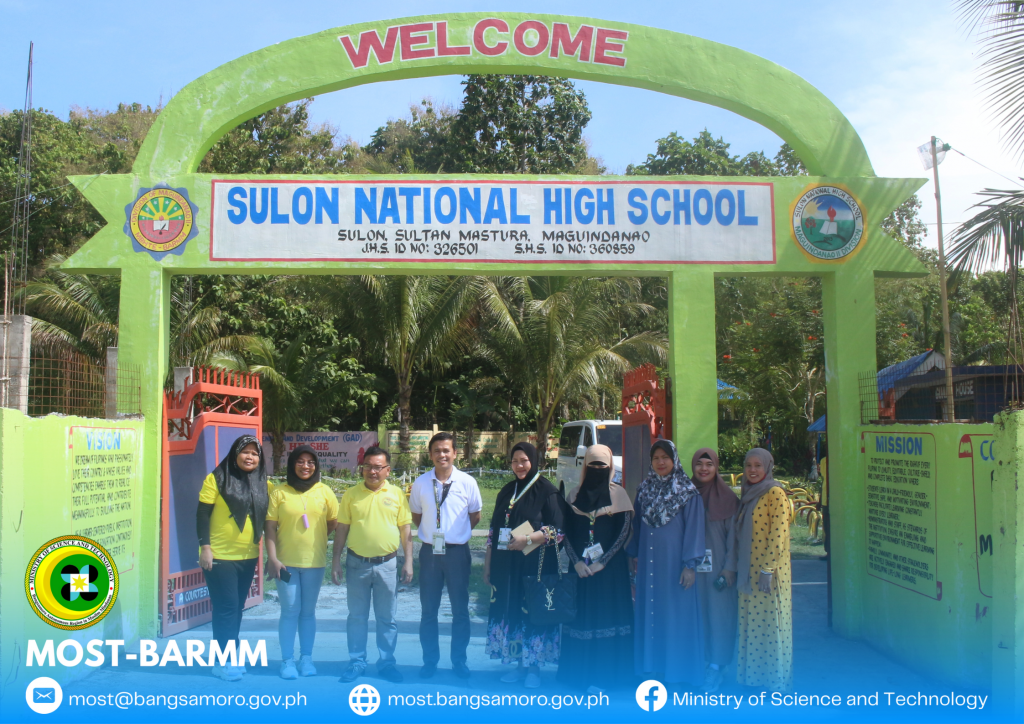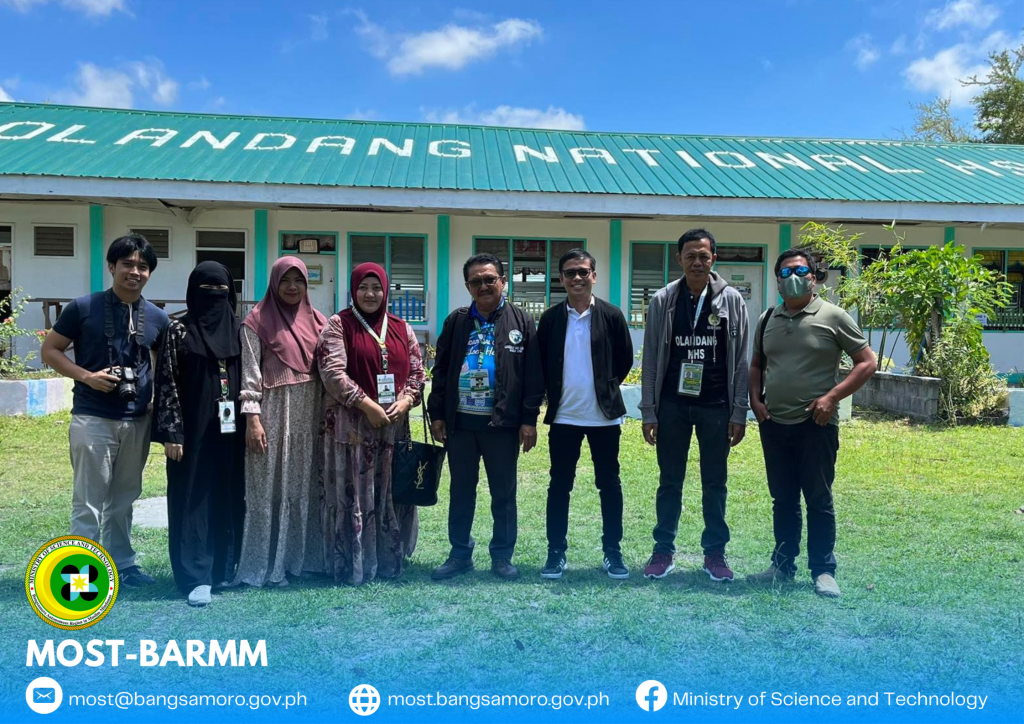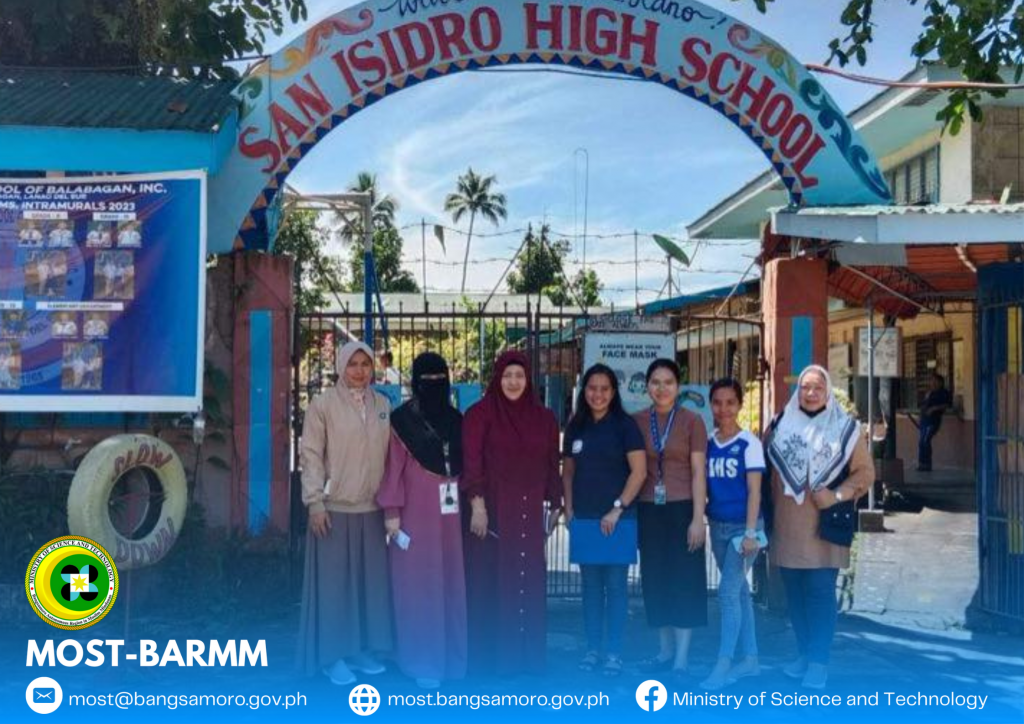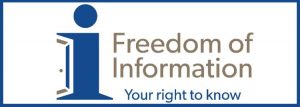Bangsamoro, Philippines — To evaluate the science education needs of schools, the Ministry of Science and Technology assessed twenty-two (22) national high schools in the region on March 13-22, 2023. It was also to see the real situation of the science education problems, especially in the region’s remote areas.
Nasrodin U. Buisan, Technical Management Operation Services (TMOS) Director II, RocayaEdres, LPT, Chief Science Research Specialist, and other Science Education personnel and Regional Technical Evaluation Committee (RTEC) members were present in the said validation.
These were the schools visited and validated in Cotabato City, Maguindanao, North Cotabato – Special Geographic Area, and Lanao del Sur:
- DatuAyunan High School
- LR Sebastian High School
- Mohamad Integrated School
- CCNHS-PC Hill Extension
- San Vincente Academy
- Dinangen-Buldon National High School
- Manindolo National High School
- Regional Madrasah Graduate Academy
- Sulon National High School
- Sultan Barira National High School
- Balong High School – Dunguan Extension
- Matilac High School
- Nabalawag High School
- Nangaan National High School
- Olandang National High School
- San Isidro High School of Balabagan, Inc.
- Our Lady of Peace High School
- Sultan Gumander National High School
- Ambor Memorial National High School
- Poona-Bayabao National High School
- DatuRaquibZainodin National High School
- MSU – Integrated Laboratory School
In a statement, Rocaya G. Edres, Chief SRS under Science Education, Scholarships, and Grants (SESG) Division, said that the evaluation conducted by RTEC was crucial to assess the specific needs of schools and teachers when it comes to science education.
“We have validated 22 schools in the region and we have come up with some assessments of the insufficiency of science teachers per school, non-science major teachers are teaching science, some schools do not have laboratory apparatus, and a lot more,” Rocaya said.
She also added that they would come up with a plan that would address the concern of science education personnel in each school, such as the crafting of customized science-bridging training according to their needs, providing science laboratory apparatus, conducting science and math quiz bees, facilitating Science Investigatory Projects (SIP) to entice students and appreciate the world of science.
Other assessments found were some schools have science laboratory apparatuses that are not utilized because some teachers are not well-equipped with an adequate basic understanding of science concepts, the fundamental skills that the students need to design and create inventions are hampered, insufficient teachers with major science degrees, and others.
Moreover, some schools experience poor science education, and students need to be enticed with sciences. They are unlikely to choose S & T courses in college, and only a few S & T personnel will be produced.
MOST aimed to produce proficient S& T human resources, and through the programs under science education, it would address the problems encountered by schools and teachers.
The validated results of different schools are expected to be provided with S & T interventions through science education programs such as capacity-building for STEM teachers, provision of laboratory apparatus, and STARBOOKS or the Science and Technology Academic and Research-Based Openly-Operated KioskS, and other science education program interventions.
#MOSTUpdates2023
[Information & Communication]